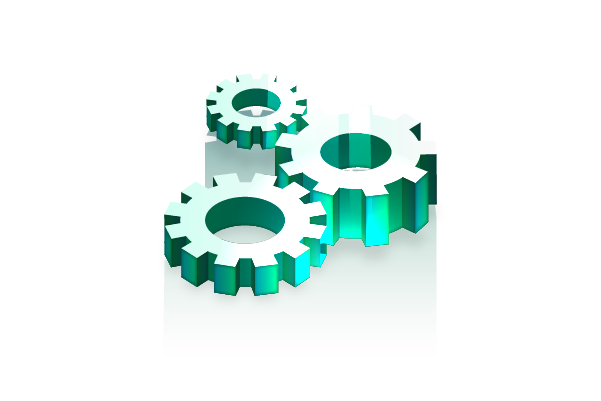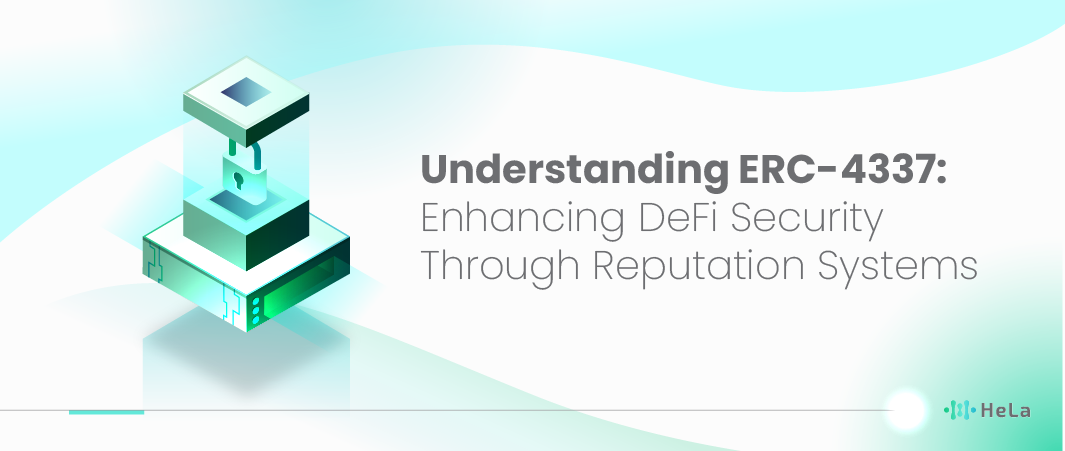The ERC-4337 standard, which was introduced in 2023, is an important milestone that has increased the interoperability of Ethereum, this makes it easier to satisfy all the requirements of DeFi protocols. Thus, ERC-4337 is more than that account place abstraction and can optimize the use of smart contract kind of attributes that are usually possessed by externally owned accounts (EOAs). This innovation was centrally proving the interconnectedness of EOAs’ (Extensible Open Authentication) freedom to smart contract wallets’ power.
ERC-4337 was born for the same reasons of DeFi framework changes such as ERC-20 but with a determination to push the borders of novelty and a guarantee for the best achievement in DEXes and liquidity regime. Initiated self-evidently through concerted endeavors of developers, researchers, and business community, ERC-4337 might undoubtedly be considered a major breakthrough in the direction of development of secure, scalable and user-friendly DeFi solutions.
What is ERC-4337 ?

ERC-4337 corresponds to Ethereum standard and its release on the mainnet was made in March 2023. According to the ERC-4337 standard approach, a mempool that has a different logical setup is being used for account abstraction. The smart contracts under this approach have some of the EOA features. In addition ERC 4337 for smart construct, a wallet interfacing with smart contracts possible by merging the two in the same account so you can even create a smart contract wallet. This substantially heightens the account level of Ethereum apparition allowing the possible implementation of services such as multi factor authentication, automatic payments etc.
One of the reasons why the Ethereum community has agreed upon the approach of the ERC-4337 is that it doesn’t need modifications in the Ethereum core protocol which is one of its important aspects.
ERC-4337 is not a new kind of token standard like ERC-721 and ERC-721 but it has introduced a new concept called “dynamic tokens”. This concept is different from the other such as ERC-20 and ERC-721 which mainly offer fungible and non-fungible tokens. This kind of system will make sure that customization is one of the key aspects of cryptocurrency, expanding tokenization to adapt token supplies as market conditions change, the users’ preferences change, and the network infrastructure evolves.
ERC standards are at the Rock bottom of the Ethereum ecosystem, and they provide the infrastructure on which the creation and implementation of the tokens, smart contracts, and the decentralized applications can be realized. These standards mirror a set of regulations and directives which enables interchanging of information, incompatibility, and smooth interactions between all Ethereum ready-made projects. From the starting implementations of ERC-20 and ERC 721 and ending with protocols for decentralized exchanges and lending platforms, ERC standards have greatly driven DeFi implementation.
Key Components of ERC-4337

Beyond the traditional token standard, ERC-4337 views all tokens as “Dynamic Tokens” of the Ethereum blockchain. While the preluding standards ERC-20 and ERC-721 are intended to deal with fungible and non-fungible tokens respectively, ERC-4337 takes the industry to another level by introducing dynamically adjustable supply framework. This new way of thinking powers the issuer of tokens to deal with the intricate matters of the virtual economy with unprecedented openness and accuracy. Let’s delve deeper into the Key Components:
1. Dynamic Supply Management
ERC-4337 is the foundation of the proposed protocol which comes with the attributes of dynamic supply of tokens built into it. On the contrary, ERC-4337 tokens are programmed based on the supply rules, accounted in predefined smart contracts, that differ from the traditional tokens which work with the fixed supply model.
The flexible nature of this helps time the projects to position and fine-tune the tokenomic and the economy targeting the specific use cases and the purpose correlated with.
2. Implement burning and Minting mechanism
ERC 4337 creates internal functions of animalistic operations for dynamically creating and burning the tokens. Coinage represents the creation of new coins, while burning is the token burning off from circulation.
These functions are so powerful as to grant token issuers the control over the issue number and its response to key factors like changing demand, network congestion, and inflation rate.
3. Governance Mechanisms
To achieve the facilitation of the transparent and decentralized bodies decision-making, ERC-4337 is integrated with governance models into the design.
They contribute to users with the opportunity to carry out the main decisions concerning the token issuance, token supply replenishment and protocol renewal. Through community support and approval, the process of governance guarantees ecosystems based on ERC-4337 are healthy and powerful.
Also Read: Top 10 Crypto KYC Providers to Consider in 2025 (Updated List)
4. Multiple Opportunities and Application
Crypto has been instrumental in developing and improving utility and the viability of numerous sectors.
The token ERC-4337 is flexible in use due to the multiple possibilities of their use in industries by creating a lot of applications. They cover any possible application in DeFi, gaming, content monetization, supply chain, and so on, and their adaptability is unmatched by any other token.
They can withstand any business model, not to mention user preferences. All this agility encourages choreography and experimentation, therefore strengthening the evolution of the tokenized systems.
5. Interoperability and Compatibility
In terms of updates, although this new standard has brought some groundbreaking enhancements, ERC-4337 maintains backward compatibility with other Ethereum-compliant standards, which guarantees a seamless interaction of the token with other applications and tokens in Ethereum’s ecosystem.
This streamlined integration simplifies the development activities of token issuers and promotes via the same channels, a higher degree of inter operationality of blockchain systems, leading to a better synergy and collaboration between diverse blockchain projects.
Potential Impact of ERC-4337

The influence mechanism of an ERC proposal is very based on it’s goals, characteristics, and the level of its acceptance by the Ethereum community. The ERCs are the standards made on technical ground within the Ethereum network, which can be varied according to the needs. The main functions of the ERCs may include the tokens and smart contracts, and protocols and infrastructure improvement. Certainly! Let’s delve deeper into each potential impact of ERC-4337:
1. New Functionality
This substantial improvement of the Ethereum environment due to the ERC-4337 modernization would be a turning point. For instance, we could focus on the ERC-4337 standard where separate control over the identity of a party could be fully integrated into a smart contract. Of course, it could change the way ID authentication is done when applied to distributed applications, acquired by example of social networks integrated in voting platforms, decentralized social networks or financial services. Developing the standard might make people more certain about the safety of identity transactions which will in turn considerably contribute to the usages extension as well as prevailing skepticism of service users to gradually start using the services in full.
On the other hand, if the ERC-4337 brings the world into the Smart Contract along with the decentralized features, to design the futuristic DApps to such an extent that they could operate in collaboration with the real-world phenomena such as weather changes and behavior of financial markets becomes possible. This could quite well lead to the insurance companies and prediction market, autonomous trading strategies getting integrated into the concept of DeFi and many other types of businesses coming up on the basis of the Ethereum Blockchain.
2. Interoperability
In the world of blockchain, the ecostructs that allow the system to survive must be interoperable. The advent of ERC-4337 might end to be the perfect solution for establishing interoperability between several blockchains and in the near future it also may find its applications beyond Ethereum blockchain. This will be done through creation of ERC-4337 which is a protocol that provides specifications that are necessary for communication between different blockchains resulting in transferring of assets between Ethereum and others like bitcoin or polkadot Systems easily.
This connectivity of pools of liquidity will make for a seamless exchange of the assets or a decentralized exchange, and also create the space for more potentialities for decentralized finance protocols. Subsequently, if ERC-4337 standardizes shared interfaces for interactions between multiple types of tokens living in the complex ecosystem of Ethereum, just thinking of how it can be done, so developers can then concentrate on improving the protocols of various blockchain assets in a less time on trying to learn how it works in all kinds of assets creates a more coherent, equal, and uniform ecosystem for everyone to use.
3. Security and Standards
Such measures as the tamper-proof transactions and irreversible smart contracts are crucial in blockchain systems unanimously emphasizing the need for robust security. ERC-4337 would promote improved security measures and security standards within the Ethereum walled garden environment. To illustrate, ERC-4337 can set up rules for more secure coding and smart contracts development which helps the coders to spot and reduce risks like reentrancy attacks or high range overflows.
One of the potential advantages of ERC-4337 is its role in encouraging the standard security audits and code reviews, in turn, raising the general security level of Ethereum-based projects, which lessens the relative risk of exploits and shields user’s funds. Apart from this, if ERC-4337 specifies the common token interfaces with the security features embedded like, permissioning mechanisms or token freezing abilities, it will be an added value for the security and reliability of the tokenized assets of the Ethereum blockchain. Therefore, it will enhance the trust among the user and the investors.
4. Scalability and Efficiency
Scalability has proved to be one of Ethereum’s biggest hurdles, particularly with the unstable network penetrability and high gas prices. Another benefit of ERC-2337 is that it may be able to handle scalability and efficiency issues by having new designs for transaction throughput, fees consumption, or the use of network resources. The same as the previous one. If ERC-4337 comes up with the standards for the off-chain state channels or layer-two scaling solutions, it could have an effect on the transactions pressure on the main Ethereum net by enabling more transactions being processed off-chain or in parallel. This could be beneficial for the transaction costs as well as for the confirmation times, which will be a lot faster.
Also Read: Top 10 Web3 Crypto Projects to Check this 2024
In addition, user experience of the decentralized applications will be superlative and seamless. In addition, if the proposition ERC-4337 pushes for gas-efficient writing styles and resource-saving methods, it will motivate the developers to design more effective smart contracts and will eventually bring down the whole resource consumption and make the applications more friendly to the users with less processing power and internet connection.
5. Community Adoption
In the ERC-4337 case, the chances of its successful implementation will be influenced by the position of the Ethereum community. In order to increase the engagement of participants across its entire ecosystem, which includes developers, users, miners, validators and various other key players, the ERC-4337 protocol will need to involve the stakeholders from all the above. Moving forward might be acquiring feedback from the community through forum, workshops, and hackathons to show the applicability of those implementations and collaboration with Ethereum entities to integrate these standards.
Not only that, ERC-4337 can access research capacity from collaborations with institutions of learning, universities, and industries’ regulators to make sure that its standards provide industry best practices, and regulatory bodies. Via disseminating ERC-4337 standard and joining forces, this standard can accelerate the innovation, nurture the ecosystem and, ultimately, secure a lead of Ethereum among other blockchain platforms intended for sophisticated DAPps and electronic assets.
Conclusion
These crypto tokens were materialized through ERC-4337 Cannister to be deployed on the Ethereum network map, and they are founded on an exciting idea of dynamic tokenization. Analytically, both innovators and shareholders will be assessing the impact of ERC-4337 bringing more experiments and tuning to get the system a cleaned decentralized and sustainable web.
The ERC-4337 may become the necessary means for secure contracts in decentralized finance, as it offers a vast field of novel playing and designing space, while it enables collaboration and participates in value creation. With time and space, the network of ERC-4337 would grow even bigger and in no time it would become an important part of the off-world-inspired DeFi market which is hailed as one of the decentralized financial infrastructures based on honesty, openness and decentralization.
ERC-4337 serves as a profound leap forward in this realm, essentially spelling out a major template for all those who wish to develop credible and adaptable token infrastructures. The determination of tokens functions, metadata, batches, and events notifications as well as features for the interoperability, advanced ERC-4337 helps to realize usable, effective and innovative decentralized finance (DeFi), digital assets, gaming, and other blockchain applications. As blockchain technology keeps improving, entities such as ERC-4337 will have a central part to play in not only the character optimization of the new digital economies but global decentralized environments as well.
Disclaimer: The information provided by HeLa in this article is intended for general informational purposes and does not reflect the company’s opinion. It is not intended as investment advice or a recommendation. Readers are strongly advised to conduct their own thorough research and consult with a qualified financial advisor before making any financial decisions.

